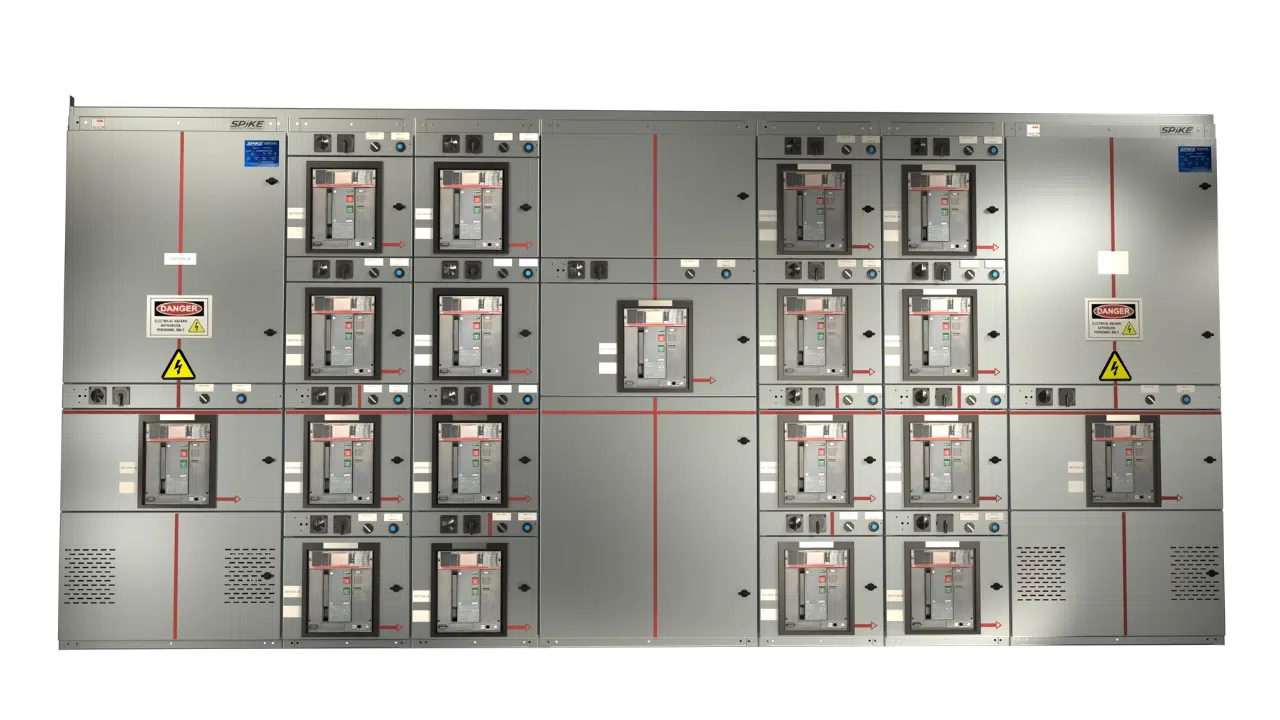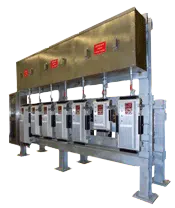
If you’ve ever heard the terms low voltage switchgear, UL 1558 switchgear, or metal-enclosed power distribution switchgear, you might have wondered what exactly they mean. These are all industry names for a crucial part of electrical infrastructure that helps control, protect, and distribute power safely in buildings, factories, and utility systems. But what does that really mean in everyday terms?
Let’s break it down in the simplest way possible.
What Is Low Voltage Switchgear?
Think of low voltage switchgear like the electrical panel in your home, but on a much larger and more powerful scale. In a house, the electrical panel takes power from the utility and distributes it to different circuits, protecting your home from electrical faults with circuit breakers. Now imagine that same concept applied to a factory, a hospital, or a data center—these facilities need something much bigger and more advanced than a home panel. That’s where low voltage switchgear comes in.
A Simple Analogy: Switchgear as a Traffic System
Imagine a busy city with hundreds of cars traveling in different directions. Without traffic lights, stop signs, and speed limits, chaos would erupt—accidents, congestion, and total gridlock.
Low voltage switchgear is like a well-managed traffic system for electricity.
- Traffic Lights = Circuit Breakers → Control when and where electricity flows.
- Stop Signs = Protective Relays → Stop the flow if something dangerous is detected.
- Highways and Roads = Busbars and Wires → Carry electricity where it needs to go.
- Police Officers = Monitoring Systems → Ensure everything runs smoothly and safely.
Just as a traffic system prevents accidents and keeps everything moving efficiently, switchgear prevents electrical failures, protects equipment, and ensures safe power distribution in large buildings and facilities.
Why Is Low Voltage Switchgear Important?
Without switchgear, electrical systems would be vulnerable to overloads, short circuits, and potential fires. Here’s why it matters:
- Protects People and Equipment: Automatically shuts off power when a problem is detected.
- Ensures Reliable Power: Keeps critical systems running without disruption.
- Allows Safe Maintenance: Lets electricians work on electrical systems without shutting everything down.
- Meets Safety Standards: Complies with regulations like UL 1558 and IEEE C37.20.1, ensuring safety and reliability.
Where Is Low Voltage Switchgear Used?
You may not see it every day, but switchgear is everywhere behind the scenes. Some common places where it’s used:
- Hospitals – Ensures life-saving equipment never loses power.
- Data Centers – Keeps servers and networks running 24/7.
- Factories – Powers heavy machinery safely and efficiently.
- Commercial Buildings – Distributes power throughout large office spaces.
- Utility Stations – Helps deliver power from the grid to homes and businesses.
The Different Names for This Product
Depending on the industry and application, you might hear different terms for low voltage switchgear, including:
- UL 1558 Low Voltage Switchgear – A common term used for switchgear that meets UL safety standards.
- IEEE C37.20.1 Metal-Enclosed Switchgear – Another term based on engineering standards.
- Low Voltage Power Circuit Breaker Switchgear – Highlights the role of circuit breakers inside.
- Metal-Enclosed Power Distribution Switchgear – Emphasizes the protective housing and power control.
- Low Voltage Switchgear Assembly (LVSA) – A general term used in electrical system design.
Final Thoughts
Even if you don’t work in the electrical industry, understanding low voltage switchgear is important because it protects and controls the electricity that powers our daily lives. Just like a traffic system keeps roads safe and efficient, switchgear keeps electricity flowing where it’s needed—safely and reliably.
So, next time you hear the term low voltage switchgear, just remember: it’s like the traffic controller of electricity, ensuring power gets where it needs to go without accidents or chaos.


